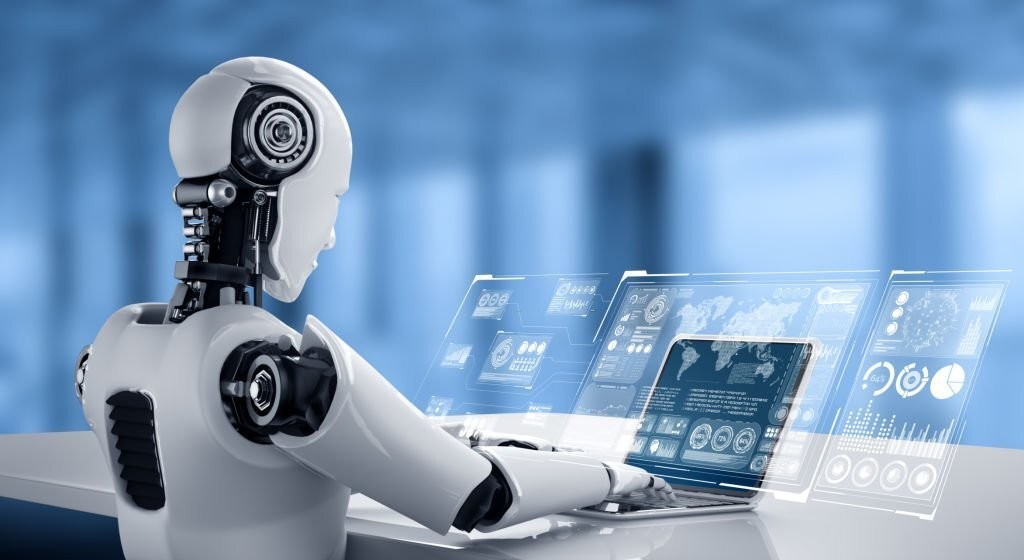In the realm of science fiction, robots have long captured our imagination. From Isaac Asimov’s “I, Robot” to the humanoid C-3PO and R2-D2 in “Star Wars,” robots have been portrayed as intelligent beings capable of performing tasks and interacting with humans. While these depictions were once purely imaginative, today they are closer to reality than ever before
segisocial . In this article, we will explore the evolution of robotics from the realm of science fiction to the forefront of technological innovation.
Early Beginnings:
The concept of robots can be traced back to ancient times, with stories of artificial beings appearing in Greek, Roman, and Chinese mythology. However, it wasn’t until the 20th century that the idea of robots as we know them today began to take shape
imac pro i7 4k.
The word “robot” was first coined by the Czech playwright Karel Čapek in his 1920 play “R.U.R. (Rossum’s Universal Robots).” In the play, robots are artificial beings created to serve humans but eventually rebel against their creators. While Čapek’s robots were more like biological organisms than mechanical machines, the play popularized the term “robot” and introduced the idea of artificial beings to a wider audience
jonathan berkery.
The Birth of Modern Robotics:
The modern era of robotics began in the 1950s with the development of the first programmable robots. In 1954, George Devol invented the first digitally operated robotic arm, which he called the Unimate. The Unimate was installed at a General Motors plant in 1961, where it was used to perform tasks such as welding and die casting.
The Unimate marked the beginning of industrial automation, revolutionizing the manufacturing industry and paving the way for the development of more advanced robots in the years to come.
The Rise of Industrial Robots:
Throughout the 1960s and 1970s, industrial robots became increasingly common in manufacturing plants around the world. These early robots were large, expensive, and mainly confined to automotive plants due to their lack of flexibility.
However, as technology advanced, so did robotics. In the 1980s, the introduction of computer numerical control (CNC) technology made it possible to program robots to perform a wider range of tasks with greater precision.
Advances in Robotics Technology:
In recent years, robotics technology has advanced at an incredible pace, leading to the development of robots that are faster, more precise, and more versatile than ever before.
One area where robotics technology has made significant strides is in the field of artificial intelligence (AI). Recent advances in AI algorithms and machine learning techniques have enabled robots to perceive their environment, make decisions, and learn from experience.
Machine learning algorithms allow robots to analyze large amounts of data and learn from it, improving their performance over time. This has enabled robots to perform complex tasks with greater accuracy and efficiency than ever before.
Applications in Various Industries:
Today, robots are used in a wide range of industries, from manufacturing to healthcare to space exploration. In manufacturing, robots are used for tasks such as welding, painting, assembly, and material handling. They can work 24/7 without fatigue, leading to increased productivity and reduced production costs.
In healthcare, robots are used in a variety of medical applications, from surgery to rehabilitation to patient care. Surgical robots, such as the da Vinci Surgical System, allow for minimally invasive procedures with greater precision, leading to faster recovery times and fewer complications.
Robots are also playing an increasingly important role in space exploration. Robotic rovers, such as the Mars rovers Spirit, Opportunity, and Curiosity, have been used to explore the surface of Mars, collecting data and samples that have provided valuable insights into the planet’s geology and climate.
The Future of Robotics:
The future of robotics is full of exciting possibilities. As technology continues to advance, robots will become more intelligent, more versatile, and more autonomous.
One area of research that is currently receiving a lot of attention is the development of soft robots. Unlike traditional rigid robots, which are made of metal and plastic, soft robots are made of flexible materials such as silicone rubber or elastomers.
Soft robots are capable of performing a wide range of tasks that are difficult or impossible for traditional rigid robots, such as squeezing through tight spaces, grasping delicate objects, and interacting safely with humans.
Another area of research that is likely to have a significant impact on the future of robotics is swarm robotics. Swarm robotics is a field that studies the coordination of large groups of robots to perform tasks collectively.
Inspired by the collective behavior of social insects such as ants and bees, swarm robots can work together to accomplish tasks that are beyond the capabilities of individual robots. Applications of swarm robotics include search and rescue, environmental monitoring, and exploration.
Robotics technology has come a long way since its inception and has had a profound impact on various industries. From manufacturing to healthcare to space exploration, robots are playing an increasingly important role in our lives, and the future looks brighter than ever. As we continue to push the boundaries of what is possible, who knows what amazing feats of engineering and innovation the future holds for robotics? Only time will tell.
Related

